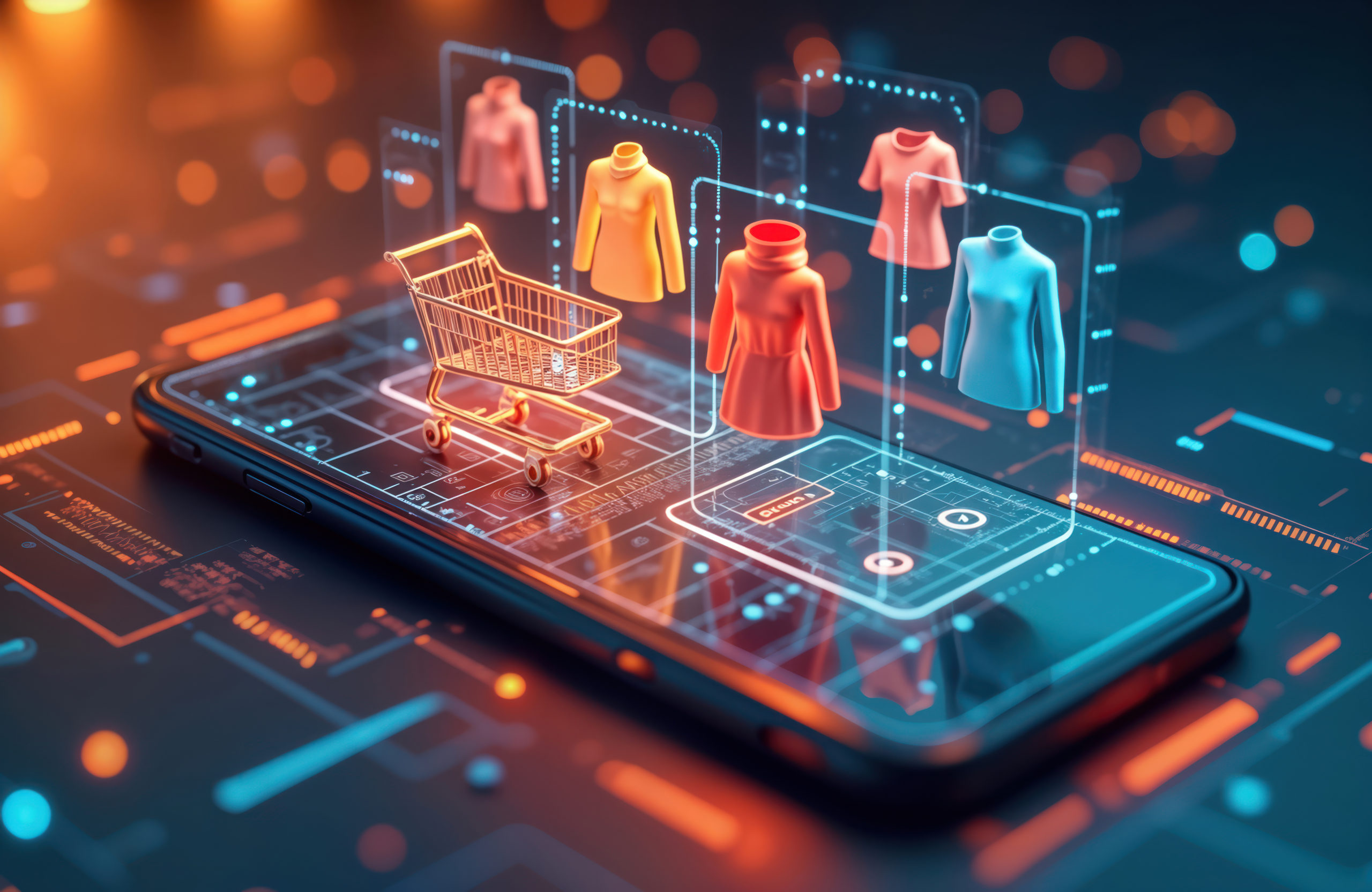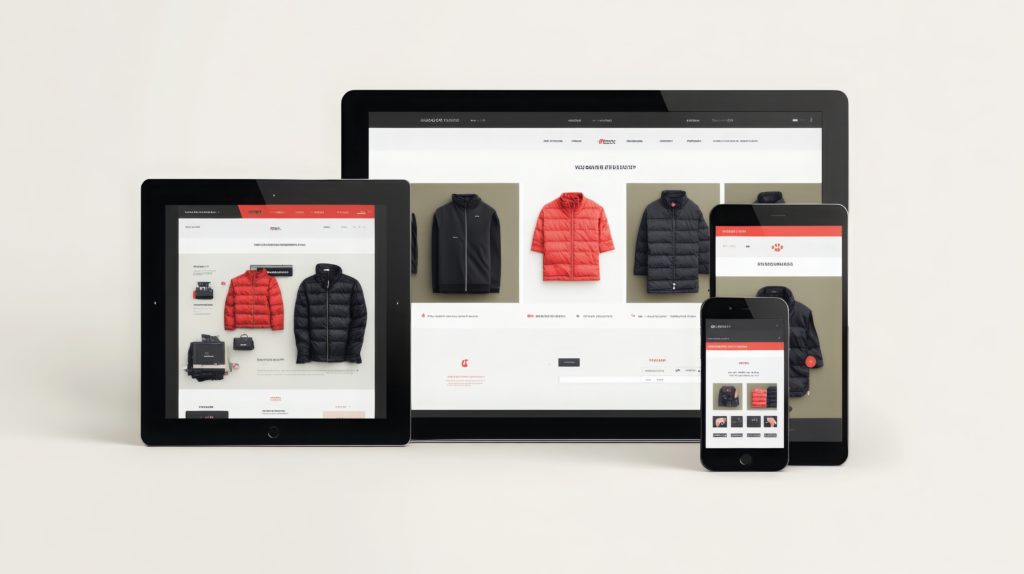- July 17 2025
5 Proven AI Use Cases in Retail: Real Results from Top Brands [2025]

AI applications are changing retail operations fundamentally. Retail executives expect their companies to adopt intelligent automation by 2025, with adoption rates reaching 80%. The retail AI revolution has already begun.
Recent data shows that 30% to 40% of retail organizations already use AI to drive digital transformation and growth. The results speak clearly – retailers who use artificial intelligence and machine learning perform better than their competitors. The global AI retail industry will reach $15.3 billion by 2025, with an impressive CAGR of 36.6%. AI’s value in retail could exceed $100 billion by 2032.
Gartner predicts all global multichannel fashion retailers will adopt AI and automation by 2025 to create targeted assortments. Businesses cannot risk falling behind in this transformation. We’ll explore six proven AI retail applications that have delivered real results for leading brands. These solutions range from generative AI for product descriptions to advanced demand forecasting. AI in retail has become more than just a competitive edge – it’s now essential for survival.
Generative AI for Product Descriptions
Generative AI changes faster how retailers create product content. Major brands adopt this technology to boost product descriptions and make content creation easier. This technology affects how customers interact with products online in measurable ways.
Use Case Overview: Generative AI in Retail
Retailers can now automatically create compelling product descriptions that showcase features, benefits, and brand voice with minimal manual effort. The technology analyzes existing data to create new, original content tailored to specific customer groups and situations.
The technology excels in retail environments where products require detailed descriptions by the thousands. To name just one example, Amazon’s massive catalog of over 300 million products gets tremendous value from AI-generated content. Retailers can use AI to produce consistent, engaging product descriptions at scale instead of hiring large teams of copywriters.
AI helps personalize product content based on customer priorities and shopping habits. AI can move important terms like “gluten-free” to the top of product descriptions when customers often search for these specific features.
Global retailers can now create localized content more easily. The technology produces high-quality, culturally appropriate descriptions for international markets without needing many extra resources. Retailers can also use this technology to boost search engine optimization by naturally weaving relevant keywords into product descriptions.
Key Features of Generative AI
Personalization Capabilities AI creates custom product descriptions using customer data, search history, browsing patterns, and purchase behavior. The technology offers specific, personalized suggestions like “Gift boxes in time for Mother’s Day” or “Cool deals to improve your curling game” instead of generic ones like “More like this”.
Multi-Lingual Support Product descriptions now come in multiple languages while keeping cultural nuances intact. This makes products available to customers worldwide. International retailers find this valuable as they expand without hiring specialized translators for each market.
SEO Optimization AI looks at search trends and customer behavior to naturally include relevant keywords in product descriptions. This helps products show up more often in searches. Retailers stay competitive in busy online marketplaces with this capability.
Adaptability Across Platforms AI-created content works well on social media, mobile apps, or email campaigns. Messages stay consistent across all customer touchpoints. Retailers maintain their brand voice on platforms of all types.
Image Analysis Integration Advanced AI systems can look at product images to spot unique features and uses. This ensures descriptions stay accurate and helpful. Fashion and home goods retailers benefit most since visual features heavily influence buying decisions.
Ground Impact on Product Content
AI-powered product descriptions bring substantial benefits to retailers:
- Time and Resource Efficiency: Manual product descriptions for thousands of items take too much time and resources. AI cuts down content creation time so teams can work on strategy instead.
- Consistency and Quality: AI keeps tone, voice, and messaging consistent across product descriptions. This creates a unified brand image. The technology also reduces manual errors in content creation.
- Enhanced Customer Experience: Shoppers find products matching their needs more easily when AI highlights relevant features. This personal touch makes shopping better.
- Improved Conversion Rates: Personal, well-written product descriptions lead to more sales. McKinsey’s research shows AI could boost marketing productivity by 5 to 15 percent through better content, search personalization, and product discovery.
In spite of that, studies show customers may not like seeing the term “artificial intelligence” in product descriptions. Research found that mentioning “Artificial Intelligence” made people less likely to buy, especially with high-risk products. Retailers should focus on describing features and benefits rather than highlighting AI terminology in customer-facing content.

Brand Example: Levi Strauss
Levi Strauss & Co.’s digital transformation strategy now includes generative AI. The company uses AI to help write first drafts and translations. This gets product descriptions to websites faster while staying true to the brand.
Levi’s keeps humans involved—nothing runs fully on autopilot. Dr. Amy Gershkoff Bolles, Global Head of Digital and Emerging Technology Strategy at Levi Strauss & Co., explains, “While AI will likely never fully replace human models for us, we are excited for what this technology might do for customer experience”.
Levi’s approach follows their new Data and AI Principles, with five main commitments:
- Trust & Transparency – Legal & fair data processing with clear usage explanation
- Human-Centered – Humans keep proper control over systems
- Sustainable – Environment-friendly technology design
- Fair and Inclusive – Human rights come first, avoiding unfair outcomes
- Privacy-Focused – Privacy-first design that follows data protection rules
Levi’s tests AI-generated models showing clothes on different body types, ages, sizes, and skin tones. Customers can see products on models who look like them. This creates a more inclusive shopping experience and supports sustainability by needing fewer resources than traditional photo shoots.
The company shows how retailers can balance innovation with brand values through careful AI implementation. Levi’s gets AI’s benefits while reducing risks by setting clear principles and keeping human oversight.
Retailers who thoughtfully use this technology for product descriptions will likely see big improvements in efficiency, customer engagement, and sales—as long as they focus on delivering value instead of promoting the AI technology itself.
Dynamic Pricing & Promotions
Image Source: Data4Amazon
AI-powered dynamic pricing has become a powerful tool that maximizes revenue while keeping customers happy. Traditional static pricing models can’t match how AI algorithms adjust prices live based on multiple factors. This creates major competitive advantages in today’s ever-changing market.
Use Case Overview: AI for Dynamic Pricing
Retailers use dynamic pricing – also known as surge pricing, demand pricing, or time-based pricing – to automatically adjust prices based on current market conditions. This approach has changed how businesses determine product values. The old fixed pricing models have given way to fluid systems that respond to market changes.
AI-powered dynamic pricing analyzes huge datasets to find the sweet spot between profitability and competitive positioning. The system monitors and processes information from multiple sources:
- Competitor pricing strategies
- Current inventory levels
- Customer behavior patterns
- Seasonal trends
- Market demand fluctuations
- Historical sales data
Advanced AI systems use machine learning algorithms that learn continuously from market data, buying patterns, and competitor pricing to predict demand and adjust prices instantly. Manual analysis could never match this responsiveness because humans can’t process such massive amounts of data.
The numbers tell the story: 92% of surveyed U.S. retailers use AI in their strategies, and 56% already have live pricing capabilities. Gartner predicts that by 2025, the world’s top 10 retailers by revenue will use contextualized live pricing to manage their in-store prices.
Key Features of Pricing Algorithms
Pricing algorithms come in two main types: simple rule-based systems and sophisticated AI-driven approaches using reinforcement learning (RL). Each type serves different purposes in retail pricing strategies.
Rule-Based Algorithms:Simple rule-based algorithms follow set patterns, like matching prices or undercutting competitors by fixed amounts. These reactive systems use “tit for tat” approaches – they follow competitors’ price changes up or down. They’re easy to set up but lack their AI counterparts’ sophisticated learning abilities.
AI-Powered Algorithms:Advanced AI algorithms use reinforcement learning to optimize pricing through constant testing and adaptation. These systems quickly spot patterns in competitor behavior and customer responses. They can:
- Find price elasticity across different product categories
- Pick the best times to adjust prices
- Spot products where price changes won’t hurt sales
- Predict how customers will react to different pricing strategies
AI pricing algorithms don’t communicate directly with competitors but can still drive market-wide price increases. This happens because reinforcement learning algorithms notice when competitors use rule-based systems and learn that raising prices will likely make competitors do the same.
A complete AI-driven pricing solution typically uses five key modules working together to suggest prices:
- Long-tail module sets introductory prices for new or niche items
- Elasticity module calculates how price affects demand
- KVI (Key Value Item) module estimates each product’s effect on consumer price perception
- Competitive-response module suggests changes based on live competitor prices
- Omnichannel module coordinates prices between offline and online channels
Real-World Impact on Revenue
AI-powered dynamic pricing delivers impressive financial results in retail sectors of all sizes. Companies using these systems report major gains in profits and efficiency.
A retail chain with 300+ locations tried AI pricing software that looked at 20 factors to suggest optimal prices. The 90-day pilot showed amazing results: The retailer used 98% of the price suggestions, which led to 8.49% higher sales and 3.63% bigger basket values compared to stores without the system. The algorithm balanced prices instead of raising them across the board, so average shelf prices stayed stable.
A department store’s results proved even more impressive. After adding AI pricing to their physical and online stores, they saw 13% more customers and 4% higher basket revenue in their physical locations. Online results were stellar – sales jumped 40.1% and they sold 59.1% more products.
Other retailers saw similar success:
- AI-powered pricing strategies boosted profits up to 22%
- Responsive pricing cut excess inventory by 30%
- Customer retention improved 15-20% during busy periods
- Order values during peak sales went up 13% on average
The benefits go beyond just money. Retailers save time and reduce mistakes by automating what used to be manual work. These systems also let retailers react to market changes in minutes instead of hours – a huge advantage in today’s digital world.
Brand Example: Amazon
Amazon leads the pack in AI-powered dynamic pricing. The e-commerce giant has fine-tuned its approach since the early 2000s. They adjust millions of product prices daily – sometimes multiple times per day – based on factors like competitor pricing, demand, and inventory levels.
Amazon’s pricing strategies haven’t escaped controversy. Despite this, retailers still try to imitate Amazon’s sophisticated approach to dynamic pricing. Amazon’s strategy helps them look cheap on high-visibility products while protecting profits on items where price matters less.
Dynamic pricing technology keeps evolving, and retailers find smarter ways to use these systems while keeping customer trust. The best approaches balance making money with keeping prices fair.
Multi-Modal Search & AI Shopping Assistant

Shoppers today just need user-friendly, individual-specific experiences. This pushes retailers to use more advanced search technologies. Multi-modal search and AI shopping assistants are powerful retail tools that change how customers find products through natural conversations and visual inputs.
Multi-Modal Search & AI Shopping Assistant Overview
Multi-modal search technology helps customers find products by combining text, images, and voice inputs at once. These systems use artificial intelligence to process multiple input types, unlike traditional keyword searches. The result is a more natural and user-friendly shopping experience.
AI shopping assistants work like virtual concierges. They help customers browse, compare, and buy products through natural conversations. These digital guides understand your priorities, suggest products, and answer questions live. Commerce leaders report that AI has boosted product discovery, customer satisfaction, loyalty, and individual experiences substantially.
E-commerce faces a basic challenge – 73% of shoppers research and buy products across multiple channels. Retailers must provide smooth omnichannel experiences. Customer expectations have moved toward conversation-based commerce as shoppers look for online interactions that feel like in-store visits.
How Multi-Modal Search & AI Shopping Assistant Work
Several connected technologies work together to create individual-specific shopping experiences:
Vector Search and Embeddings: The system creates vector embeddings when customers upload images or type text. These numerical representations capture the meaning and visual features of products and queries. Products match with user inputs based on similarity rather than exact keyword matches.
Natural Language Processing (NLP): AI shopping assistants use NLP to understand customer questions in everyday language. Shoppers can describe products naturally instead of using specific terms.
Computer Vision: Computer vision analyzes uploaded photos to find style, color, pattern, and shape features that match product inventory.
Machine Learning: The system gets better through machine learning. It studies browsing history, past purchases, cart activity, and page views. This ongoing process creates better personalized recommendations.
Large Language Models (LLMs): Advanced shopping assistants use LLMs for natural, human-like conversations. These models understand context and give detailed product information.
To name just one example, see a shopper who uploads a dress picture while typing “red floral maxi dress with puff sleeves.” The multi-modal system handles both inputs together and matches the image’s style with the description to show relevant results.
Benefits of Multi-Modal Search & AI Shopping Assistant
These technologies offer clear advantages for retailers and customers:
- Improved Customer Engagement: Individual-specific responses and product suggestions keep visitors browsing longer.
- Increased Conversion Rates: Easy product discovery and detailed specifications help complete more purchases.
- Higher Average Order Value: AI assistants suggest related products based on shopping history, which boosts average sales.
- Reduced Support Needs: Quick chat responses answer customer questions fast and reduce service requests.
- Enhanced Accessibility: The technology helps different users – visually impaired shoppers use voice search while others use image search to avoid language barriers.
The effects go beyond convenience. These systems change product discovery completely. Amazon’s AI recommendations make up 35% of total sales. Google Lens handles over 20 billion visual searches monthly.
Book a Multi-Search Demo with ViSenze to see how this technology can transform your customer experience and drive real results.
Real-World Example: H&M
H&M’s AI Shopping Assistant
H&M uses an AI-powered virtual shopping assistant on their mobile app and website. The assistant helps customers find products through natural conversations while suggesting items based on individual style priorities.
The system offers practical features:
- Answers live questions about orders, pickup, delivery, returns, and refunds
- Suggests outfits based on body type, weather, and fashion trends
- Creates conversational shopping through natural language
H&M’s chatbot lets customers browse products, get styling tips, and receive individual-specific recommendations through natural conversations.
Personalized Recommendations
AI-powered recommendation engines have transformed how brands connect with customers in today’s information-heavy world. Individual-specific shopping experiences now play a crucial role in retail success. This technology delivers substantial returns and changes how customers find and buy products.
Personalization Overview
Modern retail uses real-time data and technology to create shopping experiences that match each customer’s priorities. Standard approaches no longer work as customer expectations grow. Research shows 71% of consumers expect individual-specific experiences, and 67% feel frustrated when interactions don’t match their specific needs.
Customers now demand experiences tailored to their needs. About 80% of consumers buy more from brands that offer individual-specific experiences. Retailers have started to utilize AI-powered personalization, and 92% of surveyed companies report using it to grow their business.
Retail has moved beyond simple “customers who bought this also bought” suggestions. Modern AI systems build detailed customer profiles that help plan strategy. These profiles help retailers understand customer behavior at every point to send relevant messages, targeted deals, and provide better service.
How Personalized Recommendations Work
AI recommendation engines follow a sophisticated process that starts with data collection. These systems gather:
- Past purchase history
- Browsing behavior
- Product views
- Cart activity
- Time spent on specific pages
- Customer demographics
- Search queries
These systems use several advanced techniques:
- Collaborative filtering: Identifies patterns across similar users to make recommendations
- Content-based filtering: Suggests products with attributes similar to previously purchased items
- Deep learning: Recognizes complex patterns beyond explicit programming
- Natural language processing: Interprets review sentiments to match products with user priorities
AI systems keep learning after making their original recommendations. Algorithms analyze customer interactions and update their understanding based on new data. This continuous learning keeps recommendations relevant and in line with changing priorities.
Benefits of Personalization
AI-driven personalization creates measurable benefits for retailers:
- Increased Revenue: Companies can boost revenue by 5-15% through personalization, according to Salesforce data. Customers are 3.2 times more likely to buy when they see AI-powered recommendations.
- Higher Average Order Value: Smart product suggestions lead to 70% more purchases and 33% bigger orders. Retailers boost sales by suggesting matching products like moisturizers with serums or lip liners with lipsticks.
- Improved Customer Retention: Smart shopping experiences bring back customers and drive 44% of repeat purchases worldwide. This creates more value through customer loyalty and repeat business.
- Enhanced Discovery: Smart suggestions help customers find products they might miss otherwise. This makes them feel understood and valued. Customers believe these retailers understand them better than competitors.
- Reduced Marketing Costs: Smart customer targeting helps companies spend marketing budgets better. Some studies show budget-friendly personalization programs can cut customer acquisition costs by half.
Real-World Example: Sephora
Sephora leads the way in AI-driven personalization. Their focus on individual-specific beauty experiences has paid off. Online sales grew from $580 million to $3 billion in six years.
Sephora’s personalization strategy uses several connected technologies:
Beauty Insider Profiles: Customers create detailed beauty profiles with their priorities, concerns, and goals. This information powers specific recommendations, from skincare routines to makeup guides, making suggestions more relevant.
Color Match Technology: Sephora’s AI studies customers’ skin tones and suggests matching products. This technology tracks facial features and shows how virtual eye shadow and lipstick look on users’ faces.
Data Analytics: The company utilizes customer data to understand shopping habits better. By studying purchase history, browsing patterns, and engagement, Sephora spots trends and adjusts its offerings.
This detailed approach to personalization works well for Sephora. Average order values increased by 25%, and repeat customers grew by 17%. Customer satisfaction jumped 20% among people who used AI-powered recommendations.
Smart product recommendations have become essential for customer experience as more retailers adopt artificial intelligence. This technology no longer just offers competitive advantages – it defines modern retail strategy.
Demand Forecasting

Retailers face a big challenge in managing their inventory while meeting customer needs with the right stock levels. AI-powered demand forecasting has become the life-blood of modern retail. It helps businesses predict what customers want with amazing accuracy.
Demand Forecasting Overview
Statistical models help determine when customers will buy specific products at certain prices. Old forecasting methods don’t work very well with limited data processing and market changes. AI now uses advanced algorithms to look at huge datasets. This gives retailers evidence-based information about what customers might buy.
Advanced AI systems cut supply chain errors by 20% to 50%. This leads to a 65% improvement in how well operations run by reducing lost sales and product shortages. On top of that, AI forecasting engines can handle up to 50% of workforce-management tasks. This cuts costs by 10% to 15%.
How Demand Forecasting Works
AI demand forecasting systems use several sophisticated algorithms:
- ARIMA: Analyzes past sales for trends and seasonality
- Random Forest: Uses multiple decision trees to capture relationships between variables
- Gradient Boosting: Builds sequential models that compensate for previous errors
- LSTM: Neural network model for detecting long-term dependencies in demand patterns
These systems take in immediate data from many sources—sales transactions, web activity, weather, supplier availability. Retailers get a complete view of their inventory and demand. This helps them make quick decisions and avoid running out of stock or having too much inventory.
Benefits of Demand Forecasting
AI-powered demand forecasting brings big advantages. It boosts forecast accuracy, cuts costs, and makes operations run better. Warehouse expenses usually drop by 5–10% while administrative costs fall by 25–40%. These systems grow naturally with businesses and handle more data as needed.
Beyond saving money, AI lets retailers model different scenarios. They can see how changes in prices, promotions, or supply would affect customer demand.
Real-Life Example: REWE
German grocery chain REWE used AI-powered demand forecasting to make their supply chain better, especially for food that spoils quickly. REWE worked with inovex to build a system using Apache Spark, Scikit-Learn, and Pandas. Their system scales easily when they add new warehouses or items.
REWE’s results were impressive. Their new prediction tools cut the number of unavailable items in half while keeping the same write-off rate. This balance between having products available and avoiding waste shows how AI helps solve retail’s biggest inventory challenge.
Conclusion
Major retail brands have shown AI’s real value through measurable results and market advantages. Many companies now utilize artificial intelligence to change their operations. Levi’s uses generative AI for product descriptions while Amazon runs sophisticated dynamic pricing algorithms. H&M’s AI shopping assistants, Sephora’s tailored strategies, and REWE’s demand forecasting systems prove how versatile AI can be across retail functions.
The numbers tell a compelling story. Companies using AI-powered personalization see 5-15% revenue growth, and dynamic pricing strategies boost profits by up to 22%. Demand forecasting cuts supply chain errors by 20-50% and reduces warehouse costs by 5-10%. These results explain why 80% of retail executives plan to use intelligent automation by 2025.
Getting started with AI might seem daunting at first, but its competitive edge becomes clearer each day. Smart retailers who apply these solutions gain advantages through better customer experiences, smoother operations, and analytical decision-making. The focus now isn’t whether to adopt AI, but which tools will bring the most value to your retail business.
Smart retailers need to assess their capabilities and find ways to integrate AI. Starting with product descriptions, pricing, or demand forecasting helps build a more responsive and customer-focused operation. AI in retail isn’t just changing how stores work today—it shapes what’s possible tomorrow.

